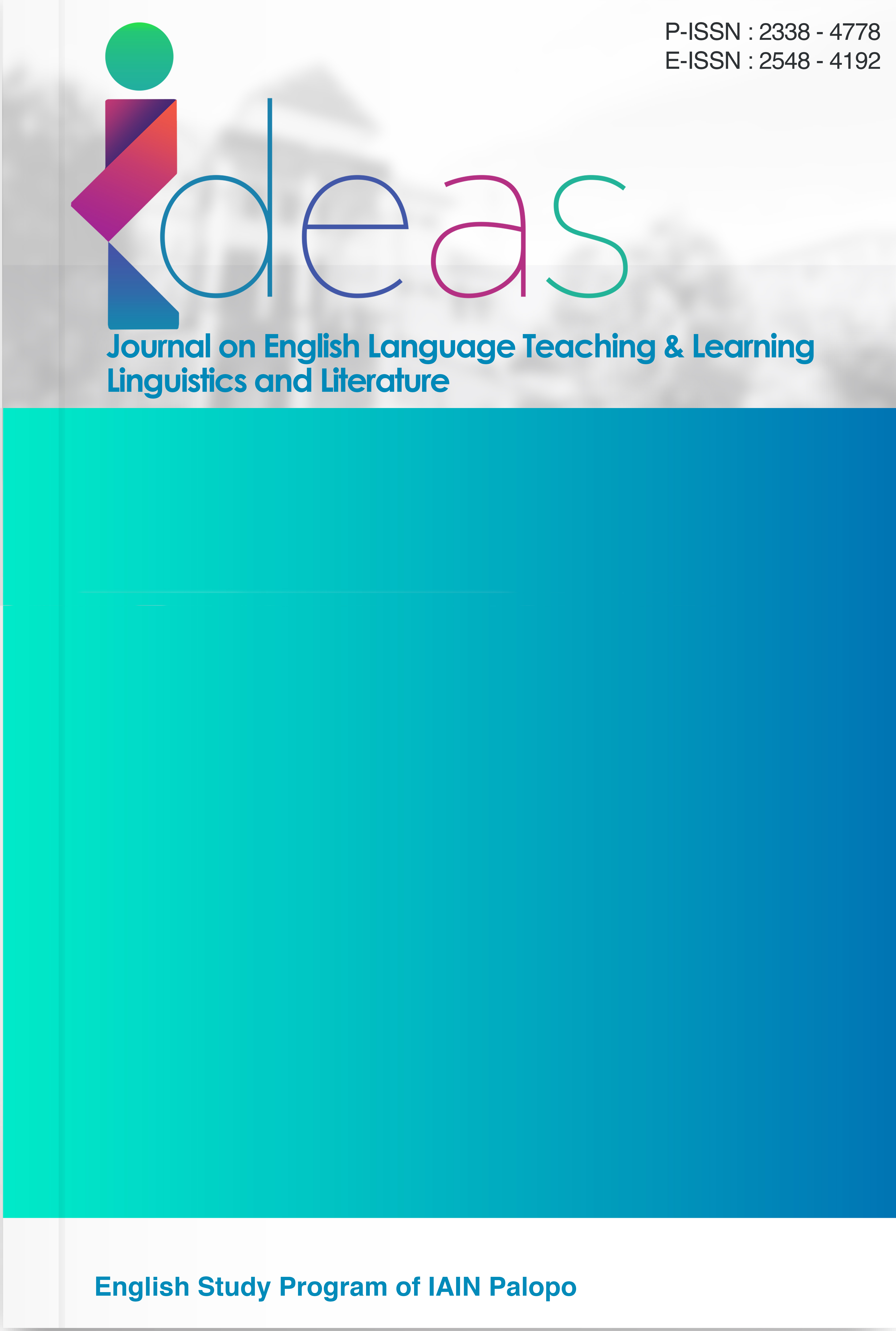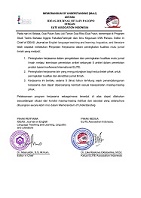An Analysis of Moral and Patriotism Values in The Movie: Disney’s “The Little Mermaid”
DOI:
https://doi.org/10.24256/ideas.v13i2.7032Keywords:
Moral values, patriotism, disney film analysisAbstract
This study analyzes moral values and patriotism in Disney's "The Little Mermaid" (2023) using descriptive qualitative methodology with content analysis techniques. The research addresses contemporary society's moral crisis and declining patriotic sentiment, particularly among younger generations, through examining how popular media can serve as educational vehicles for positive value transmission. Utilizing Magnis-Suseno's theoretical framework for moral values and Ginting's patriotism theory, the analysis identified five dominant moral values: courage, integrity, responsibility, cosmic awareness, and reconciliation, categorized across three human relationship dimensions. The patriotism analysis revealed four key values classified into blind and constructive patriotism, with constructive patriotism dominating 75% of examined scenes. Findings demonstrate that courage and integrity are the most prominent moral values, while pro-people leadership and multicultural unity represent significant patriotic elements. The research employed theory triangulation and data source triangulation to ensure validity. Results suggest that Disney's adaptation effectively integrates moral education and patriotic values relevant to Indonesia's contemporary challenges, including elite corruption and political polarization. This study contributes to educational literature by demonstrating how modern film adaptations can serve as meaningful resources for character development and nationalism education.
References
Asri, A. N., & Rochmawati, D. (2017). Innovative teaching of English idiomatic expressions for EFL learners. Journal of English Teaching Adi Buana, 02(01), 47–58. https://doi.org/10.36456/jet.v2.n01.2017.714
Burgers, C., Konijn, E. A., & Steen, G. J. (2016). Figurative framing: Shaping public discourse through metaphor, hyperbole, and irony. Communication Theory, 26(4), 410–430. https://doi.org/10.1111/comt.12096
Clark, B. (2021). Pragmatics: The basics. In Pragmatics: The Basics. https://doi.org/10.4324/9781003197263
Dancygier, B., & Sweetser, E. (2014). Figurative language. Cambridge Textbook in Linguistics. www.cambridge.org
Forgács, B. (2022). The pragmatic functions of metaphorical language. In Language, Cognition, and Mind (Vol. 11). https://doi.org/10.1007/978-3-030-66175-5_4
Giora, R., & Filik, R. (2018). Introduction: Defaultness, affect, and figurative language. Metaphor and Symbol, 33(3). https://doi.org/10.1080/10926488.2018.1481260
Hussain, R. (2014). Metaphors and similes in literature. International Journal of Humanities and Social Science Invention ISSN (Online, 3(9), 2319–7722. www.ijhssi.org
Jogezai, F. (2020). Film theory and its application. International Islamic University, Islamabad, November. https://doi.org/10.7312/colm16973
Masruddin, M., & Nasriandi, N. (2022). Lexical and Syntactical Errors Performed by Junior High School Student in Writing Descriptive Text. IDEAS: Journal on English Language Teaching and Learning, Linguistics and Literature, 10(1), 1094-1100.
Masruddin, Hartina, S., Arifin, M. A., & Langaji, A. (2024). Flipped learning: facilitating student engagement through repeated instruction and direct feedback. Cogent Education, 11(1), 2412500.
Mackey, A., & Gass, S. M. (2022). Second language research methodology and design third edition (Third ed). Routledge. https://doi.org/DOI: 10.4324/9781003188414
Masruddin, M., Amir, F., Langaji, A., & Rusdiansyah, R. (2023). Conceptualizing linguistic politeness in light of age. International Journal of Society, Culture & Language, 11(3), 41-55.
Masruddin, M., & Nasriandi, N. (2022). Lexical and Syntactical Errors Performed by Junior High School Student in Writing Descriptive Text. IDEAS: Journal on English Language Teaching and Learning, Linguistics and Literature, 10(1), 1094-1100. doi:https://doi.org/10.24256/ideas.v10i1.3024
Melion, W. S., & Ramakers, B. (2016). Personification: An introduction. In Personification. https://doi.org/10.1163/9789004310438_002
Mukti, B. R., Novan, D., & Nugraha, S. (2022). Figurative language analysis in “Sing 2” movie by Garth Jennings: A semantics study. Ethical Lingua, 9(2), 2022. https://doi.org/10.30605/25409190.485
Padillah, E. N., Firmawan, H., & Purwaningsih, E. (2016). Simile, Hyperbole, Personification and Metaphor used in Gayle Forman’s If I Stay. Jurnal Ilmiah Sastra, 4(1).
Putra, G. A. B. S., Sudana, G. P., & Maharani, S. A. I. (2016). The figurative language in “Twilight” movie script. Jurnal Humanis, 16(3), 100–108. https://ojs.unud.ac.id/index.php/sastra/article/view/33786
Violita, V., & Cholsy, H. (2022). Speech Acts Equivalence of Audiovisual Translation on Enola Holmes Netflix Movie Subtitle. IDEAS: Journal on English Language Teaching and Learning, Linguistics and Literature, 10(1), 209-225. doi:https://doi.org/10.24256/ideas.v10i1.2589
Yule, G. (2020). The Study of Language 7th edition (7th ed). Cambridge University Press.
Zaimar, O. K. S. (2002). Majas dan pembentukannya. Makara, Sosial Humaniora, 6(2), 45–57.
Downloads
Published
Issue
Section
Citation Check
License
Copyright (c) 2025 Ema Sundari, Wanda Giovani

This work is licensed under a Creative Commons Attribution-ShareAlike 4.0 International License.
Authors retain copyright and grant the journal right of first publication with the work simultaneously licensed under an Attribution-ShareAlike 4.0 International (CC BY-SA 4.0) that allows others to share the work with an acknowledgement of the work's authorship and initial publication in this journal.
Authors are able to enter into separate, additional contractual arrangements for the non-exclusive distribution of the journal's published version of the work (e.g., post it to an institutional repository or publish it in a book), with an acknowledgement of its initial publication in this journal.
Authors are permitted and encouraged to post their work online (e.g., in institutional repositories or on their website) prior to and during the submission process, as it can lead to productive exchanges, as well as earlier and greater citation of published work (See the Effect of Open Access)




